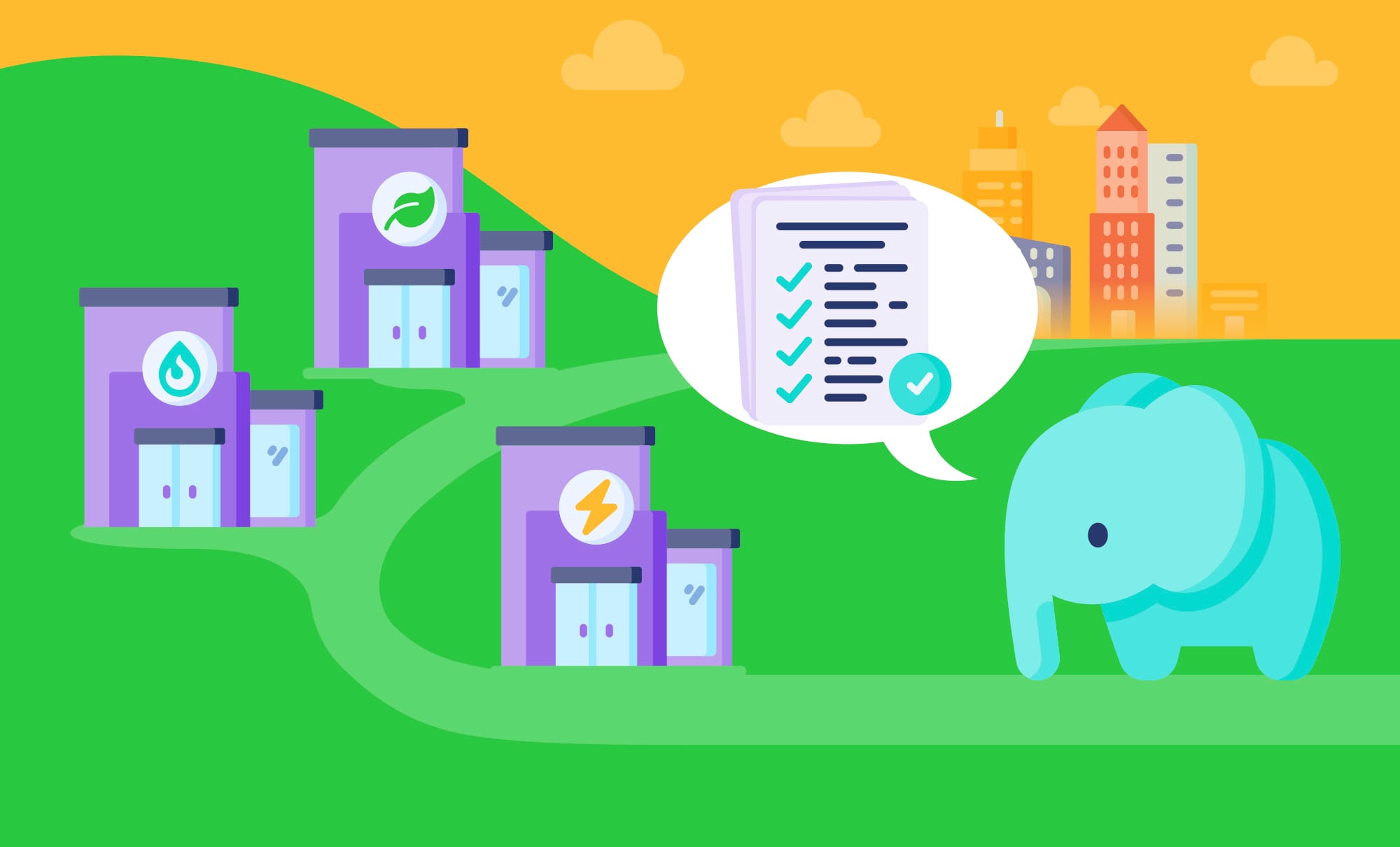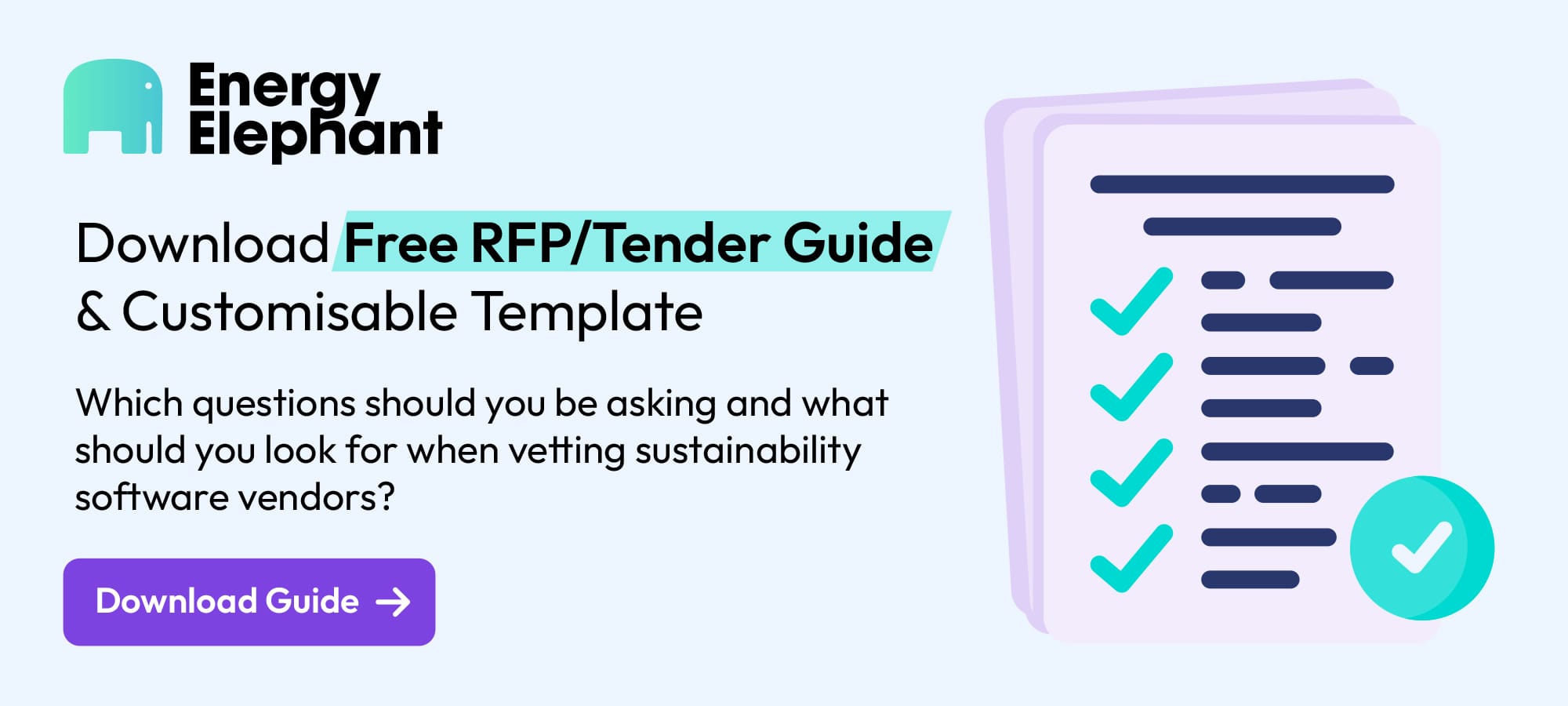Free RFP/Tender Guide with Customisable Template for Seamless Sustainability Software Procurement
Developing a strong Request for Proposal/Tender document is key to ensuring a smooth software procurement process. To help you choose the right sustainability management system for your organisation, we put together a sample list of 80 questions for you to ask (and what to look for in a response).

The first step to ensuring a smooth sustainability software procurement process is the development of a strong Request for Proposal (RFP) aka Request for Tender (RFT) document. In this article, we highlight the importance of key stakeholder involvement early on to save time, money, and energy in the long run. And we share a link to download our free RFP/Tender Guide with Customisable Template.
The Guide details similarities and differences between four of the most relevant software categories under the broad Sustainability/ESG (Environmental, Social, and Governance) umbrella. The Template provides a sample list of around 80 questions (along with expert advice on what to look for in a response), that you can edit and use in your own RFP/Tender document.
Let's get started.
Benefits of early key stakeholder involvement
Although the scope and focus of Sustainability/ESG teams, Finance teams, and Operations teams are different, effective reporting under mandatory protocols and frameworks – such as the CSRD (Corporate Sustainability Reporting Directive) – requires a significant increase in collaboration and exchange of knowledge.
Deciding which stakeholders should be included, consulted, or informed during the development of your RFP/Tender document, and the evaluation of responses to it, should be based on their relative influence on and interest in your organisation’s ESG/Sustainability objectives and targets.
When stakeholders feel their needs are being addressed, they are more likely to support the implementation/adoption of a new system. Just bear in mind, you may not be able to find a system that covers all use cases for all users, so a measure of prioritisation may be required.
Focus on the problem, not just the solution
It's common for stakeholders to know what they want to achieve, but not what the solution should look like in terms of software. So, before diving into the functional aspects of the software, start by asking stakeholders how they measure performance and success, how they achieve it, and what makes their current methods challenging.
Understanding all the processes the software must support, the problems it needs to solve, and the value it should provide can help identify gaps and opportunities for improvement.
Mitigate scope creep
Ambiguous needs and inadequate upfront planning will inevitably lead to scope creep (aka ‘feature creep’), with additional features, tasks, or requirements being added at the eleventh hour, which impacts timelines, budgets, and resources.
Along with early key stakeholder involvement, ensuring clarity on both functional and non-functional software requirements at the outset can eliminate a lot of unnecessary back and forth in the final review/sign-off stage of your RFP/Tender document.
Developing your RFP/Tender document
Procurement terminology can vary across organisations and departments. An RFP or RFT can also be called:
- Call for Tender (CFT)
- Contract for Tender (CFT)
- Invitation to Bid (ITB)
- Invitation to Quote (ITQ)
- Invitation to Supply (ITS)
- Invitation to Tender (ITT)
- Request for Bid (RFB)
- Request for Information (RFI)
- Request for Quotation (RFQ)
Much like variances in procurement terminology, language used for sustainability-focused software can vary across countries and industries, not least because products may have many overlapping features. This can make it difficult to know exactly what kind of system you’re looking for.
Our Guide explains in detail the similarities and differences between four software categories most relevant to sustainability:
- Energy Management Software
- Sustainability Management Software
- Carbon Accounting Software
- ESG Reporting Software
We've based this information on a list of product definitions from G2, which is a highly reputable global peer-to-peer review site.
Our Template contains a comprehensive sample list of questions to consider including in your own RFP/Tender document (with guidance on what to look for in a response), broken down into seven sections for your convenience:
- General questions
- Product/software-level questions
- Decarbonisation questions
- Compliance reporting questions
- Data access/governance questions
- Customer support & initial set-up questions
- Pricing questions

Further reading
Be sure to also check out our article on the Top 8 sustainability management software tools in 2025, which contains a roundup of the best platforms on the market today, with tips for evaluating similar product offerings, and advice on how to create a shortlist of software vendors.
